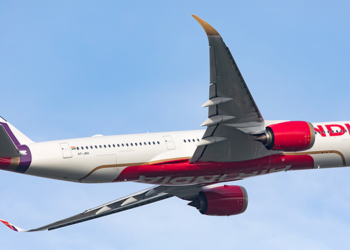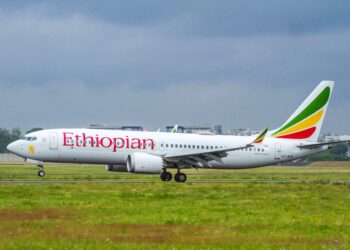GMR Airports Infrastructure Limited, formerly known as GMR Infrastructure Ltd., achieved remarkable milestones in passenger traffic during May 2024. Across all airports managed by GMR, a total of 10.8 million passengers were handled, marking a 7% year-over-year (YoY) increase. This surge in passenger numbers reflects the gradual recovery of air travel amid the ongoing pandemic.
Domestic Traffic Growth
Domestic passenger traffic witnessed a positive trajectory, growing by 5% YoY. Delhi Airport, one of India’s busiest aviation hubs, played a pivotal role in this growth. It recorded the second-highest-ever monthly passenger traffic, handling approximately 6.5 million passengers. The surge in domestic travel can be attributed to increased connectivity, new routes, and the easing of travel restrictions.
International Traffic Surge
GMR Airports also reported a significant 17% YoY increase in international passenger traffic. Hyderabad Airport, another key player in the GMR portfolio, achieved its highest-ever monthly passenger volume, serving around 2.4 million passengers. The surge in international travel underscores the importance of efficient airport operations and safety protocols.
Performance at Other Airports
- Mopa (Goa): This airport experienced an impressive 18% YoY increase in passenger traffic. As a relatively new airport, Mopa has quickly gained popularity among travelers, especially for its scenic location and proximity to popular tourist destinations in Goa.
- Medan (Indonesia): Unfortunately, Medan Airport faced a 14% decline in passenger traffic. The decline may be attributed to regional factors, travel advisories, or other external influences. Airport authorities are closely monitoring the situation to address any challenges.
- Mactan Cebu (Philippines): Cebu Airport maintained steady growth with a 6% increase in passenger traffic. Its strategic location as a gateway to the Philippines’ beautiful islands continues to attract travelers.
Aircraft Movements
In addition to passenger traffic, aircraft movements also saw positive trends. Delhi Airport recorded 37,960 aircraft movements (7% YoY growth), indicating increased flight operations. Hyderabad Airport followed suit with 15,861 aircraft movements (10% YoY growth). These figures highlight the resilience of the aviation industry and the commitment of GMR Airports to efficient air travel.
GMR Airports continues to enhance passenger experience through initiatives like biometric registration kiosks for faster immigration processing. Additionally, new routes and increased connectivity contribute to Delhi Airport’s prominence as a major air hub.
Growth in Indian Aviation Industry
The robust performance of GMR Airports aligns with the overall growth trend in the Indian aviation industry. Factors contributing to this growth include increased air travel demand, new routes, and enhanced connectivity. Delhi Airport, in particular, has been at the forefront of expanding its network with direct flights to various international destinations, including Zurich (Switzerland), Phnom Penh (Cambodia), and Ho Chi Minh City (Vietnam).
As India’s economy continues to rebound, the aviation sector remains a vital driver of economic activity, tourism, and trade. GMR Airports’ achievements underscore the resilience and potential of the Indian aviation industry, positioning it for further growth in the coming years.
Note: Mopa Airport commenced full-fledged domestic operations from January 5, 2023, and international operations from July 21, 2023.
**Disclaimer: This news article is generated from the data and figures in the original report from GMR Airports. Omniflyers has not altered the data, ensuring readers that the information is presented exactly as received from GMR Airports.





















